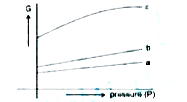The entropy change of x2 gas, during the following irreversible process, approximately is how much? x2 gas (27∘C, 1 atm, 5 moles ) →x2 gas (117∘C, 5 atm, 5 moles) (CP of x2 = 6.95 cal/mol/∘C), log 1.3= 0.1139Solution in Telugu
−6.86cal/∘C
+3.26cal/∘C
+1.86cal/∘C
−9.82cal/∘C
The correct Answer is:A
Step by step video, text & image solution for The entropy change of x_(2) gas, during the following irreversible process, approximately is how much? x_(2) gas (27^(@)C, 1 atm, 5 moles ) rarr x_(2) gas (117^(@)C, 5 atm, 5 moles) (C_(P) of x_(2) = 6.95 cal/mol/""^(@)C), log 1.3= 0.1139 by Chemistry experts to help you in doubts & scoring excellent marks in Class 12 exams.
Updated on:21/07/2023Topper's Solved these Questions
- CHEMICAL THERMODYNAMICSBOOK - AAKASH SERIESCHAPTER - CHEMICAL THERMODYNAMICSEXERCISE - Additional Practice Exercise
54 Videos
- CHEMICAL THERMODYNAMICSBOOK - AAKASH SERIESCHAPTER - CHEMICAL THERMODYNAMICSEXERCISE - Practice Sheet- Exercise-III
30 Videos
- CHEMICAL KINETICSBOOK - AAKASH SERIESCHAPTER - CHEMICAL KINETICSEXERCISE - Objective Exercise - 4 (Assertion (A) & Reason (R) Type Questions)
44 Videos
- CHEMISTRY IN EVERY DAY LIFEBOOK - AAKASH SERIESCHAPTER - CHEMISTRY IN EVERY DAY LIFEEXERCISE - PRACTICE EXERCISE
29 Videos
Similar Questions
Which among the following is not an exact differential?
View SolutionThe following curve represents the variation of Gibbs function 'G' with pressure at constant temperature. Correct match of given plots with the physical state of a substance is

View Solution(A) Spontaneous reaction may be slow or fast.
(R ) Spontaneous nature deals with feasibility of the reaction but not rate.
View SolutionAnti allergy drugs are
View SolutionIf x1andx2 are the roots of the equation e2⋅xlnx=x3 with x1>x2, then x1=2x2 (b) x1=x22 (c)2x1=x22 (d) x21=x32
View SolutionNumber of 5different digit natural number x_(1)x_(2)x_(3)x_(4)x_(5) where x_(1) x_(5)
View SolutionThe mean and standard deviation of five observations x1,x2,x3,x4,x5 and are 10 and 3 respectively, then variance of the observation x1,x2,x3,x4,x5,−50 is equal to (a) 437.5 (b) 507.5 (c) 537.5 (d) 487.5
View SolutionCalculate the entropy change accompanying the following change of state 5 mol of O_(2) (27^(@)C, 1 atm) rarr 5 mol of O_(2) (117^(@)C, 5 atm) C_(P) for O_(2) = 5.95 cal deg^(-1) mol^(-1)
View SolutionLet x1 and x2 are the roots of ax2+bx+c=0(a,b,cεR)andx1.x2<0,x1+x2 is non zero, then the roots of x1(x−x2)2+x2(x−x1)2=0 are
View SolutionIf the SD of x1,x2,x3,….,xn is 5 , then find SD of x1+5,x2+5,x3+5,…,xn+5.
View SolutionTotal number of integral solutions of the system of equations x1+x2+x3+x4+x5=20andx1+x2+x3=5 when xk≥l0,is
View SolutionLet the equation x5+x3+x2+2=0 has roots x1,x2,x3,x4andx5, then find the value of (x22−1)(x23−1)(x24−1)(x25−1).
View SolutionFind a quadratic equation whose roots x1 and x2 satisfy the condition x21+x22=5,3(x51+x52)=11(x31+x32) (assume that x1,x2 are real)
View SolutionIf one mole of monoatomic ideal gas expanded from 2 atm to 0.5 atm at 27°C, then the entropy change will be
View SolutionFind a quadratic equation whose roots x1 and x2 satisfy the condition x21+x22=5,3(x51+x52)=11(x31+x32) (assume that x1,x2 are real)
View Solution
